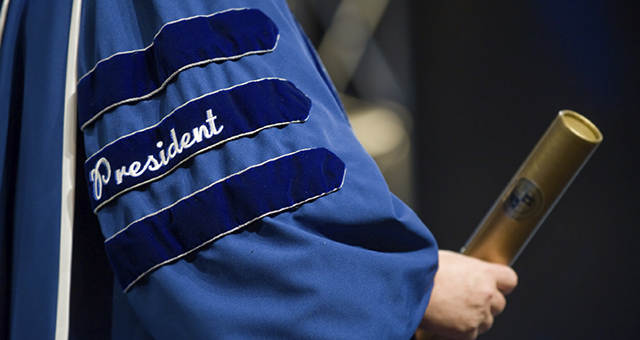As a recently retired academic leader—a former department chair, division head, dean, vice president, provost, and interim president—I have had time to reflect on the joys and woes of leadership at a small liberal arts college. What was the cost of leadership? What successes did I have? What failures? What could I have done differently that would have made my college a better institution? “Too soon old and too late smart,” an old saying goes. But there is some value in ex post facto assessments, yes?
If one looks at the academic leader balance sheet, what kinds of accounting might one find? Below I identify four principles that might help other deans and college administrators evaluate the pluses and minuses of the leadership dynamic.
Principle 1 – It isn’t easy being dean.
There are those in the academy—often professors and staff members working in the “trenches”—who think their leaders have it easy: a big office, good pay and benefits, underlings to whom the hard work can be delegated. But with apologies to Kermit the Frog (who was lamenting color discrimination), it isn’t easy being dean, a position that has many pains as well as pleasures: hiring and keeping that cadre of “trench workers,” managing complex and limited budgets, dealing with unhappy students—and even worse, their parents—can make a long work week even longer and more painful. No, it is not easy being dean!
Principle 2 – No good dean goes unpunished.
This principle of leadership follows from the first. If the dean (or other academic leader) makes a decision that is controversial and/or unpopular, that leader should be ready to “suffer the slings and arrows of outrageous fortune” (with apologies this time to The Bard). How is such punishment to be delivered? Oh, let me count the ways! There is gossip, ostracizing, memos to superiors (or even to the local newspaper), angry recriminations, hanging in effigy, “no confidence” votes—the list of punishments is long indeed. Perhaps we should ignore what we can on the grounds that what other people think of you is none of your business, or perhaps we should counter what we can and dismiss the rest on the basis of Yogi Berra’s wise comment: “Half the lies people tell about me aren’t true.” And face it: We deserve some of the punishments that come our way, and some pain is therapeutic.
Principle 3 – The lead administrator has the best view.
This principle comes from the world of dog sleds and canine leadership, but it has its application in higher education as well. Those at the back of the pack will usually have their view limited by those at the front. Such perspectives always impact points of view. A related principle says, “Where you stand depends on where you sit.” In any event, the leader has a more or less unrestricted view of the terrain ahead. How will government policies affect anticipated resources? How will MOOCs and other technological innovations impact enrollments in brick-and-mortar colleges? What important new trends can we see emerging from the murky mist of college reform efforts elsewhere? Decisions by academic leaders have to reflect the long view and the big picture—and consider the likely costs. Some of those costs are the natural aftermath of change, but we must not, as futurist Joel Barker warned, mistake the edge of our rut for the horizon.
Principle 4 – Academic leadership costs, but it also pays.
Making decisions about the direction of one’s institution will always have consequences, some positive, some negative, and some both. Instituting a new academic program, major, certificate credential, travel-study opportunity for students—any such decision will create a host of winners and losers. A new academic major, for example, will help recruit new students to the college, but it may also create collateral damage: fewer students choosing existing academic majors. Eliminating an existing academic resource—a writing center, for example—can help balance the budget but at a cost of jobs and student academic performance. So much of academic leadership is making win-lose decisions; you can only aim for as many win-win decisions as possible.
Conclusion
No doubt: When I was leading a department, a division, a school, or the college, I made both good and poor decisions. My vision now, in hindsight, is 20-30 if not 20-20. But decisions have to be made in the confusing context of the present. In some cases I was too slow to act and, in others, too quick. In still other cases I needed to secure more buy-in and better information before moving ahead. But that is the fate of any academic leader.
Those of us privileged to occupy a position of leadership in our institutions can only work to calculate the costs and benefits of any decision we are required to make. Then we should do all we can to make it work for the people and colleges we serve. That is our task—a more difficult one than most of our critics know.
Thomas R. McDaniel is formerly a professor of education and senior vice president at Converse College in Spartanburg, S.C.
Reprinted from “The Cost of Leadership” in Academic Leader 32.4(2016)8 © Magna Publications. All rights reserved.



